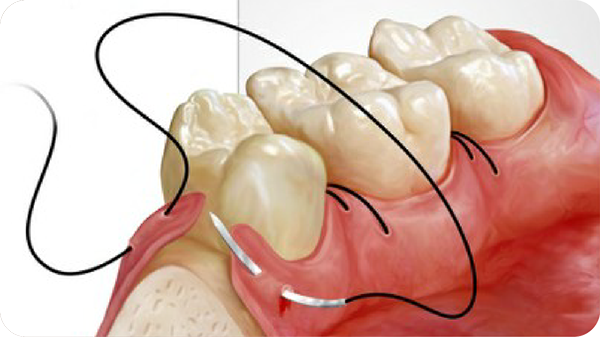
Oral surgery
Oral surgery treatments are performed in local anesthesia in order to treat pathological processes on teeth, bone and soft tissues of the mouth. The most common treatments done in dental practice are the following:
Tooth extractions
If it is not possible to repair or reconstruct a tooth to be functional again, then extraction is necessary. Teeth with infection on surrounding tissue can indanger the health of a patient. The only solution is extraction of the infected tooth. The extraction can be simple or surgical.
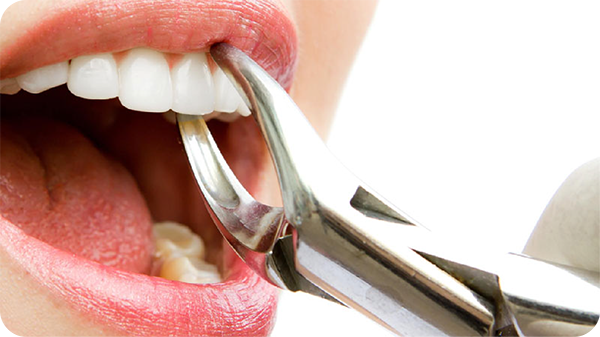
Impacted teeth extraction
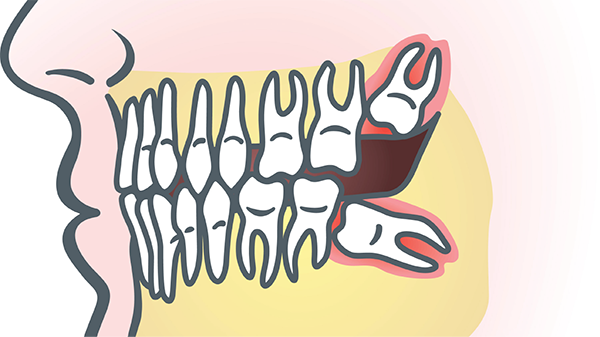
Apicoectopmy (root-end resection)
When a tooth is not treated or devastated with caries, the infection from the root canal spreads onto the surrounding bone making a periapical granuloma. This is a chronical (which can turn into acute) inflammation around the root-end which can lead to serious implications on surrounding tissues. Periapical granuloma is treated by filling the tooth canal which terminates the source of infection, leading to bone tissue regeneration in the area of the root-end. If traditional treatment is not possible or the inflammation perseveres after traditional treatment, the solution is root-end resection or apicoectopmy. Before surgical treatment it is necessary to properly fill the root canal. The process of curettage is used to remove granuloma around the tip of the root along with an affected part of the root tip itself. The tooth is shortened and filled, with the healthy bone tissue, ready to heal and return to normal function.
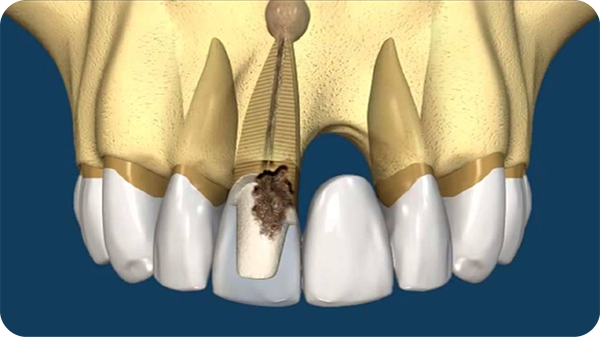
Cystectomy
Cysts are oval pathological cavities filled with liquid and coated with tissue. They can be found on bone and soft tissues. Dental cysts can, without showing any symptoms, grow considerably with a patient being unaware of their existence. Their growth is slow and more than often they are detected on x-ray images done for the purpose of other dental treatment. They can be the cause of acute infection; they can disturb tooth growing or spread through surrounding tissues and weaken bone tissue. After it has formed, a cyst grows independently of the tooth which was its cause. Due to that reason, the treatment of bone cysts requires both treatment of all teeth which are in contact with cystic lesion and removal of a cyst – cystectomy. If a cyst has affected a larger portion of a tooth root, that tooth must be extracted which will be followed by cystectomy. After the surgical procedure it is necessary to send the cyst tissue for histopathological verification as there are tumours very similar to cysts and their presence cannot be neglected.
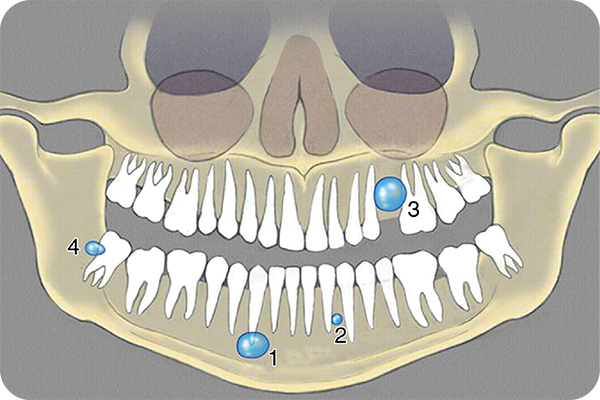
Bone leveling
Frenulum resection
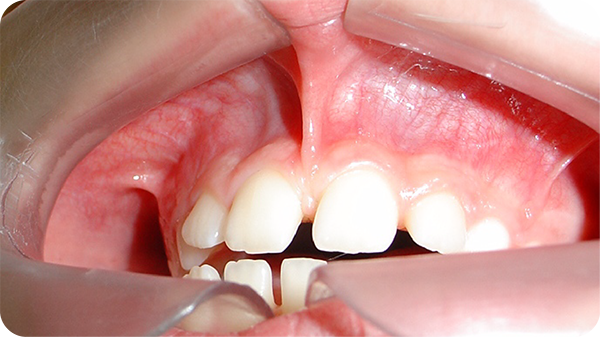
Periodontal flap surgery
Periodontal flap surgery is performed on the teeth with developed paradonotopathy where traditional treatment is not possible. Separating and lifting gingiva from underlying tissue provide better access to the root of the diseased tooth as well as to the bone tissue around it. Pathologicaly changed tissue will be removed and the pockets around the tooth will be cleaned leaving the tooth surface and surrounding bones clean. If it is possible we can fix artificial bone around the treated teeth, which will give them stronger support and save them for the future.
